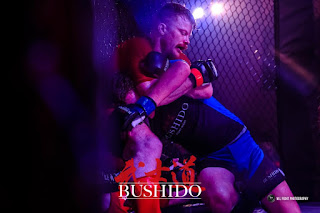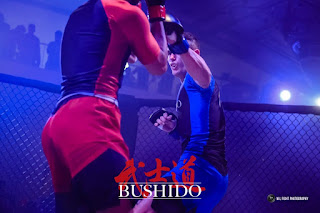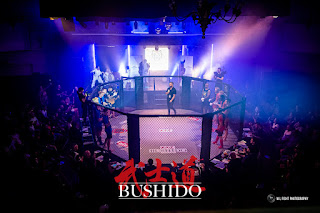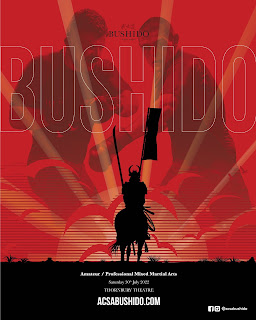In this series of articles I will look at the fights which I regard as the most significant in the evolution of Martial Arts. Rather than focusing on fights which had the highest pay per view numbers or media impact, I will discuss the matches which I feel had the most historical significance in terms of shaping and changing the sport. Mixed Martial Arts to me is all about the fights themselves and more precisely the fighters, techniques and training methods used to produce these fights.
As a coach it is important to understand the history of your sport and understand how and why it has developed in a certain way over the years. This helps to open your eyes to the techniques and training methods which have been adopted, developed or in some cases discarded. It is essential to learn from those who have come before you in order benefit from the lessons and experience they learned the hard way and avoid repeating their mistakes.
Lets begin with a fight which in my opinion really started it all; Royce Gracie versus Art Jimmerson. November 12, 1993.
The history of Mixed Rules Fights
UFC 1 was not the first Mixed Rules Fight event. There were several earlier MMA promotions including Shooto in Japan which had been active since 1986. Perhaps the most notable prior example of a Mixed Rules fight was Muhammad Ali vs Antio Inoki held in Tokyo in 1976. This fight was generally regarded as a huge failure which did not capture the imagination of fans. It was difficult to agree on rules which would accommodate both the Boxer and the Wrestler. This led to the creation of a compromised rule-set where neither fighter could really use their weapons effectively, it actually appeared that the fighters weren't trying to fight each other at all and instead just trying not to lose, something which go on to be a recurring problem in modern day MMA. There was also a lot of confusion over whether the fight would be real or 'worked' and its generally understood that even Ali himself wasn't sure if it would be a real fight until right before the match.
The first Ultimate Fighting Championship promised something that the public had never seen before. A No Rules style versus style event where the most deadly martial arts systems would be pitted against each other to discover which was most effective.
The Background of this Fight
The most important fight in my opinion was Royce Gracie vs Art Jimmerson. The outcome of this match now seems very obvious and predictable. The idea of a highly trained Jiu-jitsu expert taking on a Boxer with no grappling experience and wearing one glove seems ridiculous now however in 1993 it was an eye opener about the potential of the unknown Martial Art from Brazil.
Art Jimmerson was a legitimate threat as a highly experienced professional Boxing Champion. At the time of fighting in the first UFC he had accumulated 34 fights with 29 wins and was on a 15 fight win streak His last loss was in an NABF light heavyweight title fight against Olympic gold medalist Andrew Maynard.
Little was known about Royce Gracie prior to the event. He was actually the least experienced fighter on the card and had trained exclusively with his own family for his entire life. The rest of the tournament was filled with veteran competitors from Kickboxing, Full Contact Karate, Boxing, Shoot-fighting and Sumo.
What was it about Gracies style that made it so effective in the Jimmerson fight and then in his next ten fights all of which he won via submission within the next year?
Breakdown of the fight:
The actual fight is very uneventful by today's standards. Jimmersons speed and footwork looks impressive however he is unable to land a single punch before being taken down by Gracie with a double leg take-down one minute into the match. Gracie then easily steps over to full mount position and grapevines his legs taking away all of Jimmersons mobility or any chance of escape. We can see that Gracie is patiently waiting for his opponent to exhaust himself with his escape attempts before attacking with any submissions or strikes. Jimmerson realising he is unable to escape taps out two minutes into the match.
The importance of Ground-fighting:
The first crucial lesson we can learn from this match was how it highlighted the importance of ground fighting. No modern era fighter would consider competing in Mixed Martial Arts without extensive training in BJJ or another ground fighting system. Back in 1993 very few people realized the importance of ground fighting or had any idea of what they would do if a fight went to the ground.
Ground fighting also known as NeWaza or ParTerre did exist in various other systems such as Judo, Sambo or Wrestling but was quite often underestimated or ignored completely. It was just something you did if you couldn't throw your opponent. Most stand-up stylists were oblivious to the possibility of ending up down on the mat. They assumed that a skilled fighter would be able knock out or disable an opponent before they could get a grip on them or would easily be able to escape from any grip or hold.
Brazilian JiuJitsu was one of the only Martial Arts styles that focused on the strategy of getting an opponent to the mat by any means necessary rather than a classically impressive match winning throw or take-down. Once on the ground you have taken away all of the opponents kicks, punches and strikes. The opponent being unfamiliar with ground grappling is unable to put up any offence while you are free to work towards getting a joint lock or choke. Many realizing they are out of their depth simply gave up before any submission had even been attempted. This is exactly what happened in the Jimmerson fight. It should be noted however that a big part of this strategy was the lack of time limit on the ground (unlike in Judo and Sambo) which allows the fighter to work slowly and methodically without taking any big risks which may result in losing the position and allowing the opponent back to his feet.
The Secret to the Success of Brazilian Jiu Jitsu
No secret techniques were employed by Gracie in this fight or in any of his next ten submission wins. All of the techniques used by Gracie to win those matches were already familiar to Judokas and other martial artists. In my opinion the reason for his success was in the Ground focused strategy discussed above and also in the training methods.
Pressure testing your techniques in some way is a vital component of all martial arts. It can be called Sparring, Rolling, Randori or Kumite but the ultimate goal is the same, to learn to apply your skills under some degree of resistance. Sparring can be divided three categories based on the level of resistance from your training partner.
Levels of Sparring
The first level is compliant Sparring. This is great for initially learning technique but the least effective for developing fighting ability and is most commonly found in Traditional Martial arts. Compliant Sparring cannot really be considered a genuine test as you are working with a willing partner who offers no resistance and allows you to execute your technique.
Second is the the most common and generally most useful type of Sparring. This involves trying to execute your techniques against a partner who is attempting to use the same techniques against you. For examples, Two judo players try to throw each other under, Two boxers try to land scoring punches on one another, or a sport karate fighter tries to kick and punch to score points against a partner who is trying to score points on them,
The Third type of training is what made Brazilian Jiu-Jitsu so effective in the early days. Imagine if the judo player was sparring against a partner who was not playing by their rules. What if the opponent was trying to punch or kick the Judo Player rather than grip fight? This would severely limit the type of throws which it was safe to use. What if there was no referee to declare an Ippon from a hold-down or a throw? The Judoka would then be forced to shift his attention to techniques which leave your opponent unable to continue such as joint locks or strangles leaving them to either admit defeat by tapping out or risk injury or unconsciousness.
In my opinion the combination of the correct strategy to fit the rule-set plus the correct training method - Practicing Jiu-jitsu to fight against other martial artists and fighters rather than to fight against other Jiu-jitsu players was the key to Royce Gracie's success and the dominance of Brazilian Jiu-Jitsu in the early days of mixed martial arts. This led to the situation where everyone needed to learn ground fighting if they wanted to survive in this type of fight and eventually to the point where fighters were able to figure and shut down the BJJ fighters which I will cover in the next article.

















